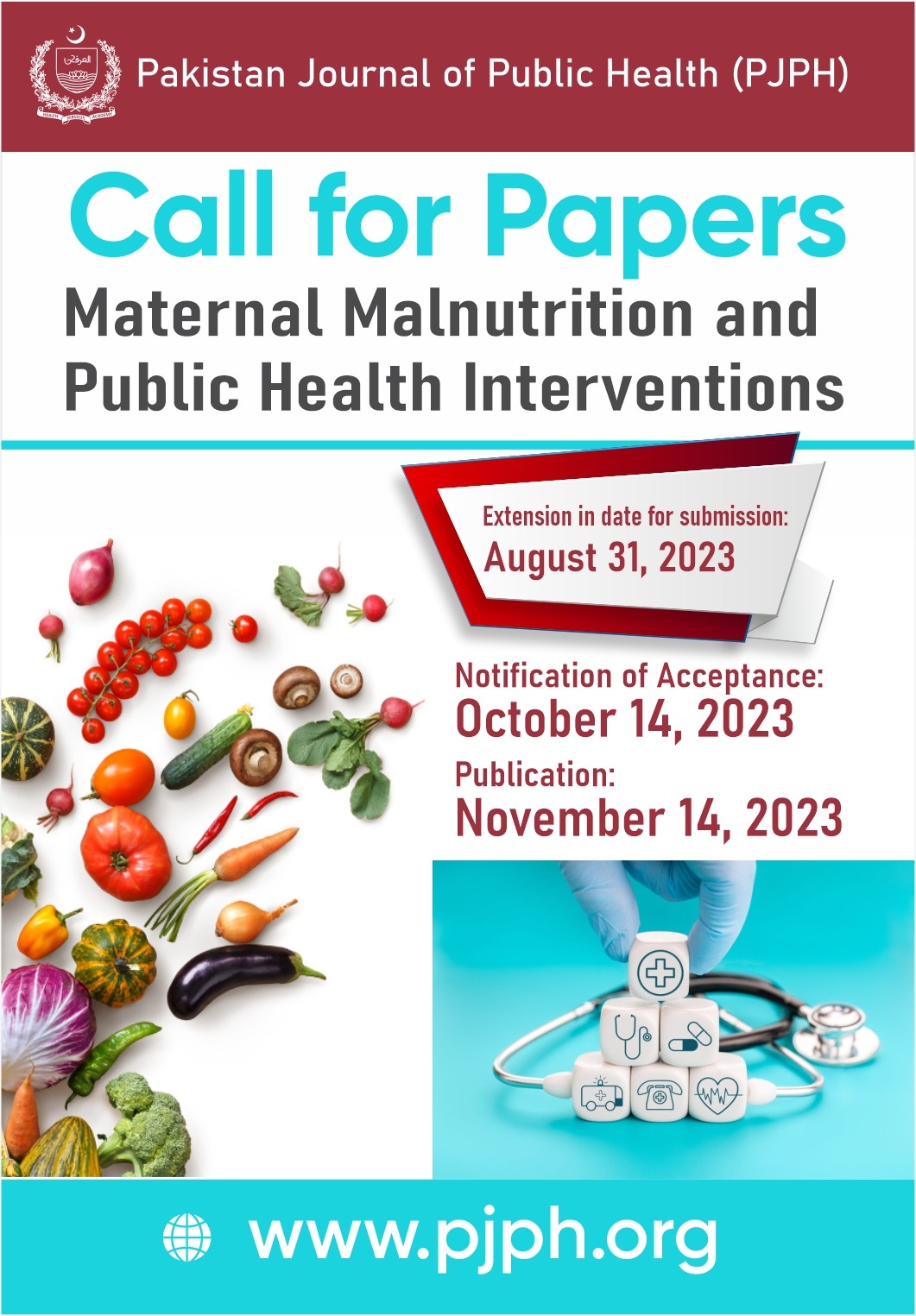OUTBREAK OF HEPATITIS-E IN AMANKOT, MINGORA, SWAT, PAKISTAN IN 2013: A CASE CONTROL STUDY
DOI:
https://doi.org/10.32413/pjph.v8i2.95Keywords:
Outbreak, infectious disease, low and middle income countryAbstract
Background: Globally, estimated 20 million cases and 70,000 deaths occur annually. A "cluster" was reported from Amankot Swat, during February 2013. Outbreak was investigated to ?nd cases, identify risk factors, infection source and recommend control measures.
Methods: Study design adopted was descriptive followed by case control study. A case was de?ned as "A person resident of Amankot, with jaundice & any of the following symptoms; malaise, anorexia, abdominal pain, fever, vomiting and dark urine during February-March 2013." Adopting case-control study design, cases and controls were enrolled assuming sampling was independent of exposure. We collected information through a structured questionnaire and data was analyzed through Epiinfo-7. Collected blood samples were tested by ELISA.
Results: Out of 800 surveyed individuals, 299 were found jaundiced. Cases were predominantly male, n=232 (77%) and most a?ected age group was 16-30 years, n=173 (58%). Apart from jaundice the most frequent symptoms included abdominal discomfort n=247 (82%), malaise n=240 (39%), fever n=197 (32%), anorexia n=266 (37%), and nausea/vomiting n=266 (37%). Identi?ed risk factors included poor sanitation (exposed 274, OR29, 95% CI 17- 46.6), consumption of municipal water supply (OR 12.3, 95% CI 7.7-19.8), old pipeline network (exposed 268, OR 8.7, 95%CI 5.6-13.6), and patient contact (exposed 68, OR 6.7, 95% CI 3.6-12.4). Water samples were contaminated with fecal coliforms.
Conclusion: Densely populated area with mostly old and rusted pipelines network running alongside sewerage lines, low water ?ow period (winter) and negative pressure within the pipes probably sucked the sewage which resulted in contamination of water.






